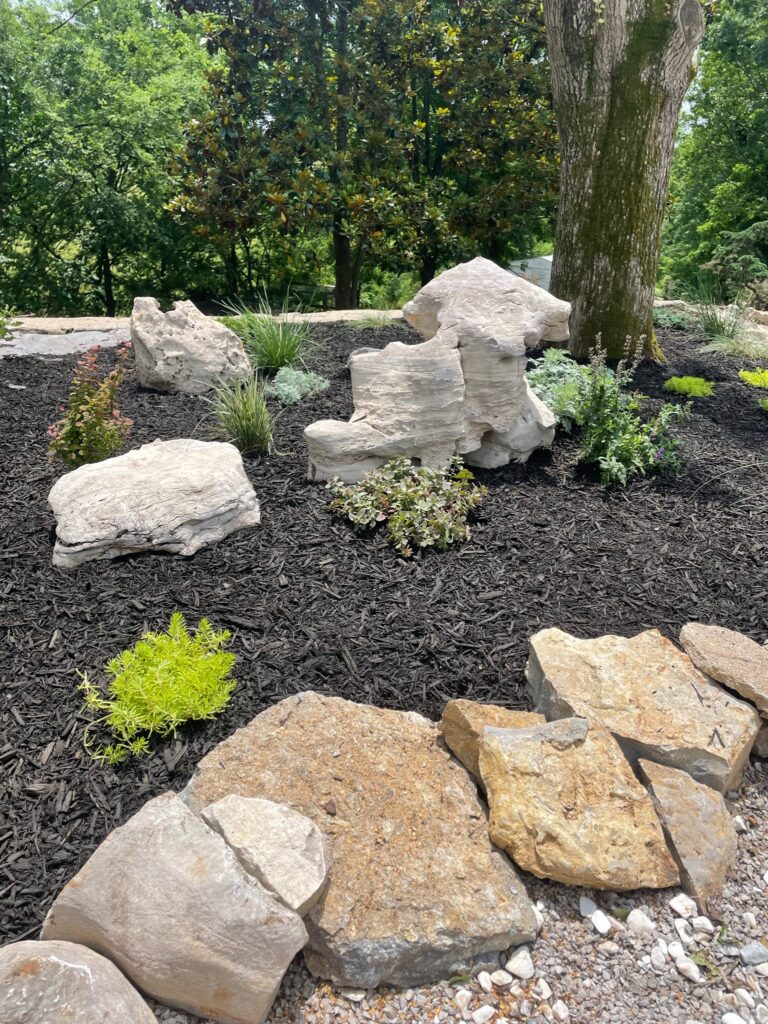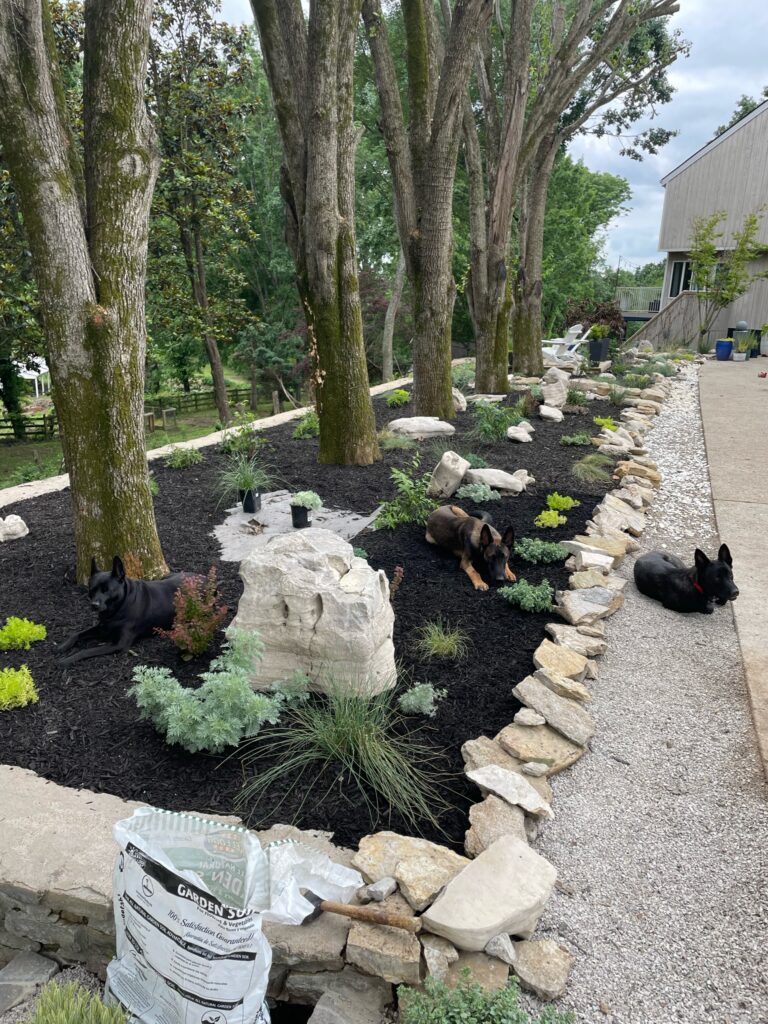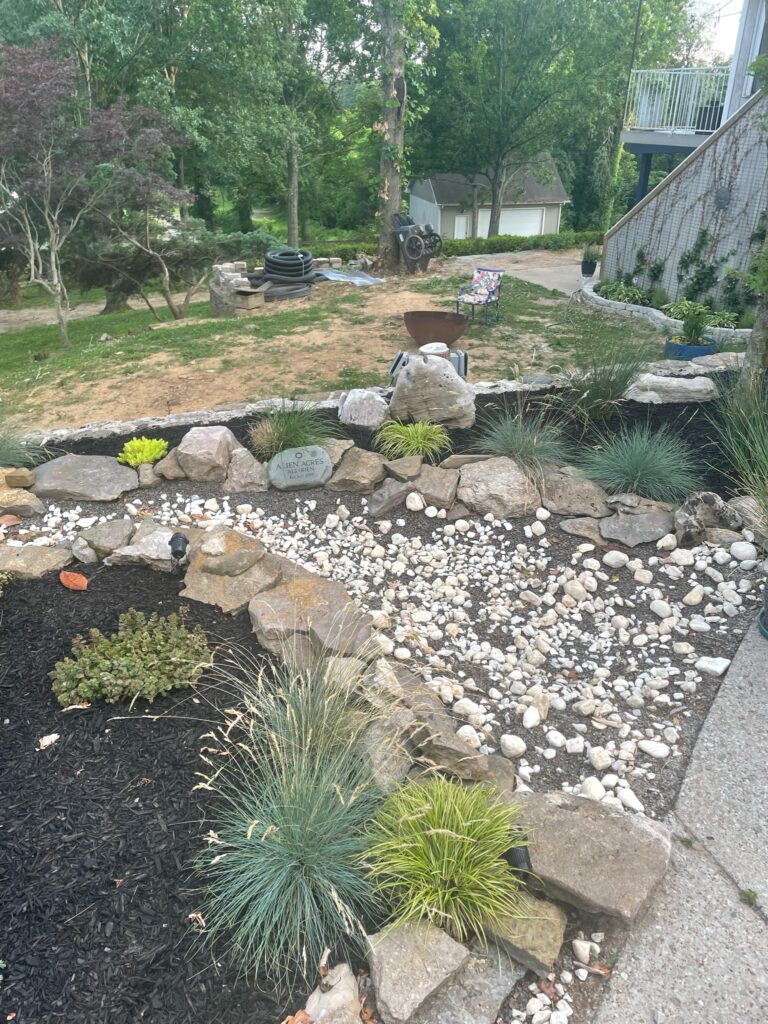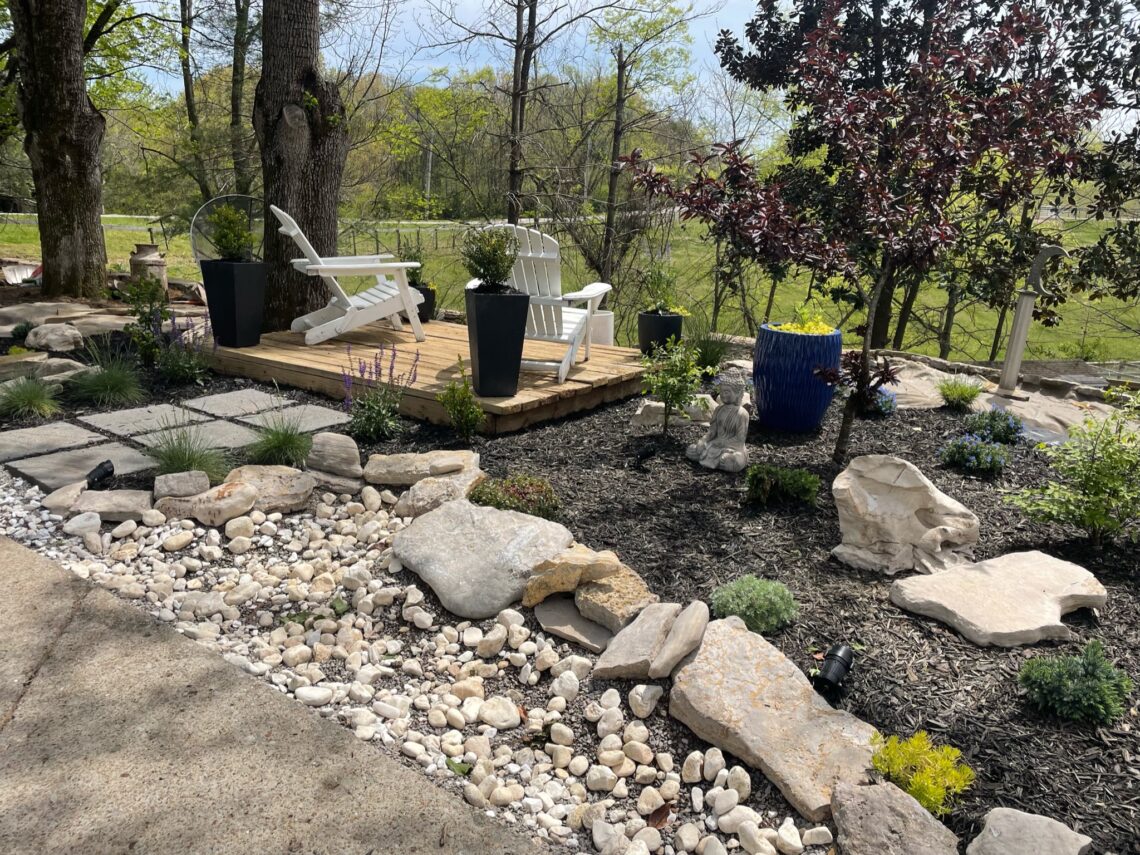I’ll show you how I was able to fix our drainage issue and add instant curb appeal using a dry creek bed and low maintenance plants, even for a beginner!

The day we got the keys to our new home I couldn’t wait to start tackling the landscape. Only problem was I had no idea how and where to start (coming from apartment living). The property had huge potential, but unfortunately it was left unkept for years without an ounce of sunlight or maintenance. Non the less it was begging for a little love. This area lines the driveway so it’s the first thing you see when you pull up to the house.
We also had a huge drainage issue. I knew nothing about correcting drainage- but I did know it was a problem and there was a solution. I was looking for something I could do on my own, using materials that we already had- as well as low maintenance that would be easy for me to keep up with over the years. I started researching dry creeks and xeriscape design- let’s go over it real quick
What Is A Dry Creek Bed?
A dry creek is exactly how it sounds. It’s a creek that is dry, and fills up with water when it rains. It redirects where water would usually pool up in your yard and slowly disperses. It’s a great solution to fix poor water drainage, while also adding a ton of curb appeal. The great thing about dry creek beds is they’re so versatile an can work in virtually any landscaping. You really could put it wherever you want even just for the fun of it- and you don’t need a whole lot of experience!

What is Xeriscape Design?
In simple terms, it’s a landscape design that prevents the need for water. That includes the type of plants used, specifically drought tolerant and native to your area. It replaces grass with rocks and mulch which in turn reduces yard maintenance. It’s great if you’re looking for a low maintenance option, and works incredibly well with dry creek beds.
You’d usually find this design popular in hot, dry climates such as the west. I decided to bring the trend to Tennessee, and swapped out your typical cactus and agave plants for some that complimented my zone 7 garden.


Ok great, now that we know a little more about that we can get to work- but first some fun before photos
The Demo for the Dry Creek Bed
After some heavy tree trimming I got to work on clearing, weeding, and pressure washing to get the gunk off the concrete. We had a gorgeous Japanese maple and dwarf peach tree I was able to salvage. Everything else must go!



Now that I had a blank canvas to work with, I started digging a trench where the concrete ended. This is where all the water build up would sit from the slope of the driveway and gutter drop off. You can see how dirty it was, weeds and mud everywhere! I decided to make the main dry creek where most of the water landed, in the bottom right photo


I dug about 12 inches, and then working in sections applied ground cover. I waited for a good rain to test it out before I started filling it up, and it worked! We were fortunate enough to have a ton of rock material in the back of the property, such a score! We borrowed our neighbors tractor and started doing dump runs of gravel and rock to the front (I’m also impatient so I put mulch down as I went, just for visual)


I went to Home Depot and got some bags of white rock to layer on the gravel to give it more texture- it really pops against the black mulch!




Low Maintenance Plants
I went with cool tones and lots of different texture for four seasons of color. Blues, purples, and silvery foliage with pops of red to welcome fall. Mixing flowy grasses, sedums, and junipers gave visual interest. I added some white boulders in the beds to tie in the rock garden. A few of the plants I went with for my zone 7:
- Blue Star juniper
- Old Gold juniper
- Boxwoods
- Elijah “Blue Fescue”
- Twisted Arrows Rush
- “Little Bunny” Fountain Grass
- “Lemon Coral” Sedum
- “Steel the show” Sedum
- “Silver Mound” Artemisia
- “Autumn Joy” Sedum
- “Dragons Blood” Sedum
- Blue Phlox
- Salvia
- Burning Bush
- “Orange Rocket” Barberry
I will say I was able to find majority of these from my local Lowe’s center. They have a great selection to choose from, especially when just starting out. I added landscaping lighting I found on Amazon that were super easy to install, even for a rookie like me. And here are the results!






Hi, this is a comment.
To get started with moderating, editing, and deleting comments, please visit the Comments screen in the dashboard.
Commenter avatars come from Gravatar.